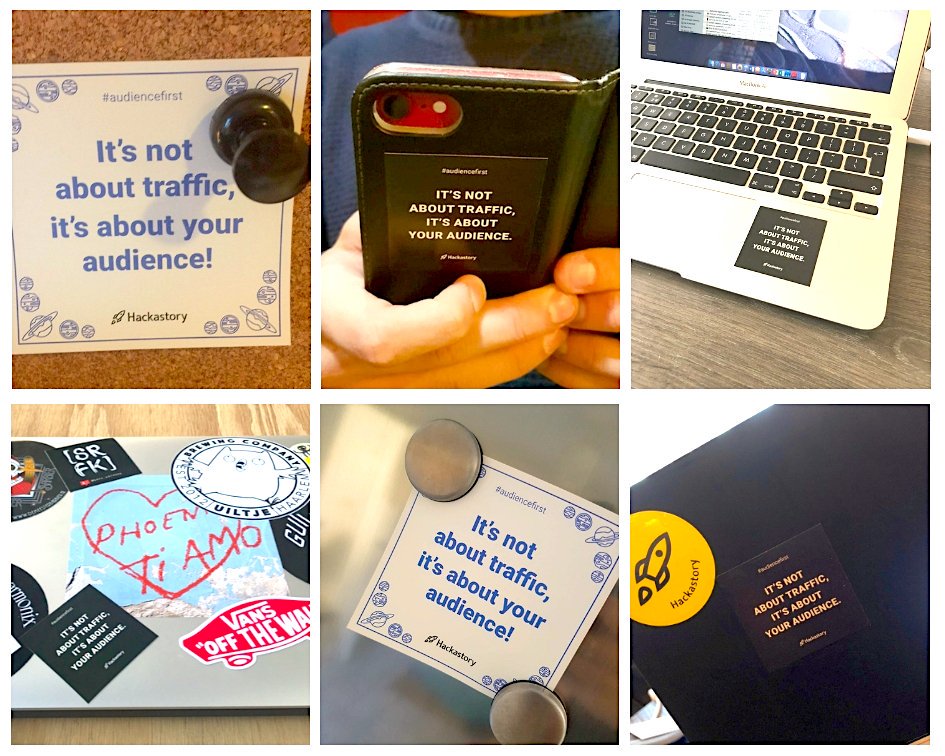What a year 2018 was. There were crises all over the world, presidents were going mad and journalism was even more under attack than last year. Not only because of fake news and misinformation, but journalists themselves were also literally under attack. The Guardian even wrote an article, in response to the CPJ (Committee to Protect Journalists) report, stating that the threat hasn’t been this high for ten years.
Journalists became victims of their own circumstances. They’re fighting for a greater good and fighting against misinformation. However, those investigations also threaten journalists’ well-being and some of them even lose their life to find the truth. Also, newsrooms are drowning in a deep pool of self-loathing under the pressure of fake news. These are big hurdles to take. Yet, stop being a victim, start altering the circumstances. 2019 is knocking on the door. Stop looking back, look forward, start working together.
1. Press freedom
We end 2018 with the TIME person of the year. This year they made a special edition. They have 4 different covers: Jamal Khashoggi, Wa Lone & Kyaw Soe Oo, Maria Ressa and The Capital Gazette. They are called The Guardians in the war on truth. This shows the worldwide concerns about free journalism. In the article, they’re quoting also Luz Mely Reyez (Efecto Cocuyo), who we met in May in Venezuela: “Free journalism in Venezuela is a species in extinction.” Not only on continents like South-America press freedom is in danger
2. Traditional journalistic values in a modern age
We believe innovation doesn’t mean reinventing what already is invented. Build on the traditional values of journalism, hack them and give them a modern spin. That’s how we transformed a journalistic golden oldie, 5W and H. It helped me find clear answers in our Audience First strategy. Something akin to our philosophy is the BBC’s ‘six needs model’. They reinvented why we bring news and formed new approaches
3. Less quantity more quality
Not only is the news consumer lost in a jungle of information
4. Stick together, we make the future
When we talk about cooperation in journalism, we don’t only talk about working with coders and designers. It’s also about working together with your audience to regain trust. For 2019 you should include: work together as journalists! We need to become more united as journalists. Not only do we need to work together
5. Constructive
While using traditional values to innovate, we also break out of traditional chains and start being more constructive. Not just chasing breaking news, but also reporting on ways we can deal with crises or social situations. What are the long-term tendencies creating our here and now? An example of this approach that will change 2019 for sure, is The Correspondent, the English franchise of the Dutch platform. Their goal: unbreaking the news. Journalism.co.uk wrote about this new trend of constructive journalism. It could be a potential way to refind your connection with your audience.
6. Trust in journalism will grow With fake news and misinformation on their ultimate high, journalists need to regain trust. Luckily there are more and more new and old media redefining their values to regain trust. In 2019 investigative journalism will rise again and journalists will report with more impact because of trustworthy news that offers context. Take a look at the first-ever strategic plan of The Texas Tribune that’s build to create a better workflow that, in its turn, will create more trust.
7. More activism in journalism
Journalists need to be objective and most of the time they need to keep their opinion to themselves. This is changing. More journalists are willing to defend a subject that is important to society. Like journalists who were covering Noura, a teenager sentenced to death after stabbing her husband because he raped her. Or the Dutch Tim Hofman who made a documentary about the legislation on sending refugee children back to their land of birth. We do have to guard that we don’t lose objectivity and balanced news.
8. Do not underestimate your audience anymore
You see more online platforms ever that combine the more serious subjects with lifestyle items. And why shouldn’t they? Why can’t someone that is interested in knowing everything about the latest fashion trends not also

9. Rehab: it’s not about traffic, it’s about your audience
Last year we already said in a prediction that we tried to create news junkies in the last few years. Copy paste and write a headline that will give you clicks. In 2018 we detoxed a bit, but in 2019 we are going in full rehab. It’s not about traffic, it’s about your audience. Take the clicks and analytics as a start, but this is the year of the why. Why does my audience behave the way they do? Why do we, journalists, report the way we do?
10. Long-Term solutions will be the focus
We visited newsrooms in Venezuela, Argentina, Belgium, Luxemburg and have seen that more and more journalists are embracing design thinking and an Audience First approach. Luckily! That’s why we decided to change our own approach and services. The future of journalism needs. We made the big decision to no longer organize one-off workshops or hackathons, but to design a program that will help you create the workflow that leads to a future-proof newsroom. Why? We believe in long-term changes, not short-term inspiration.
More and more people are working with us to change the future of journalism. Want to meet us? Mail us! Hope to see you in 2019!
